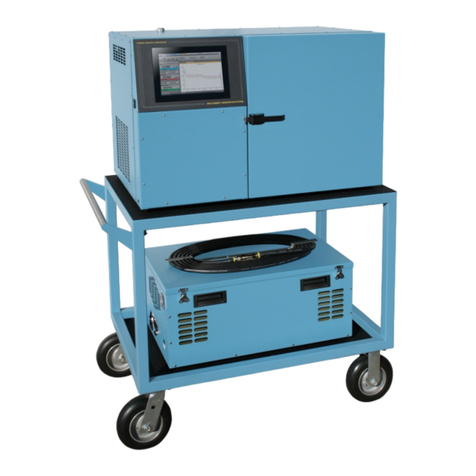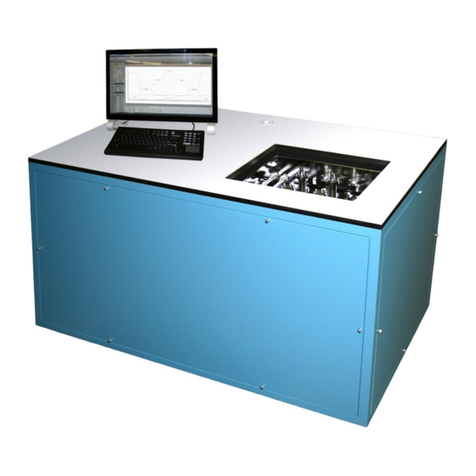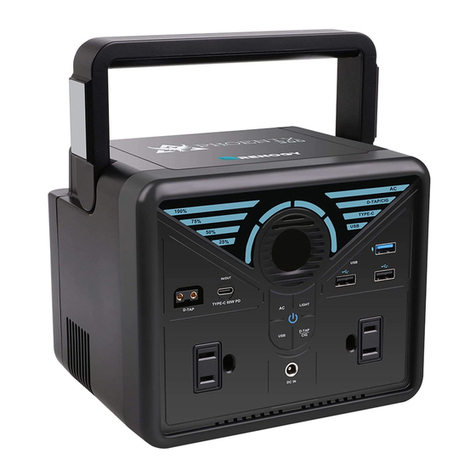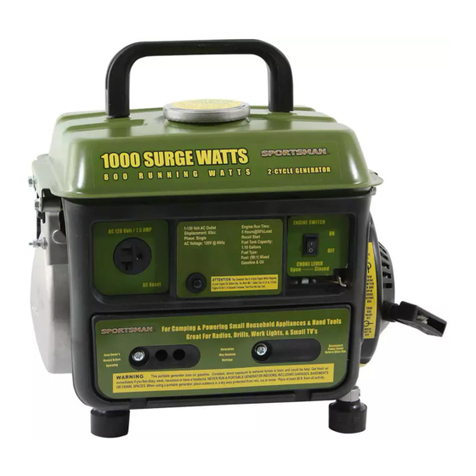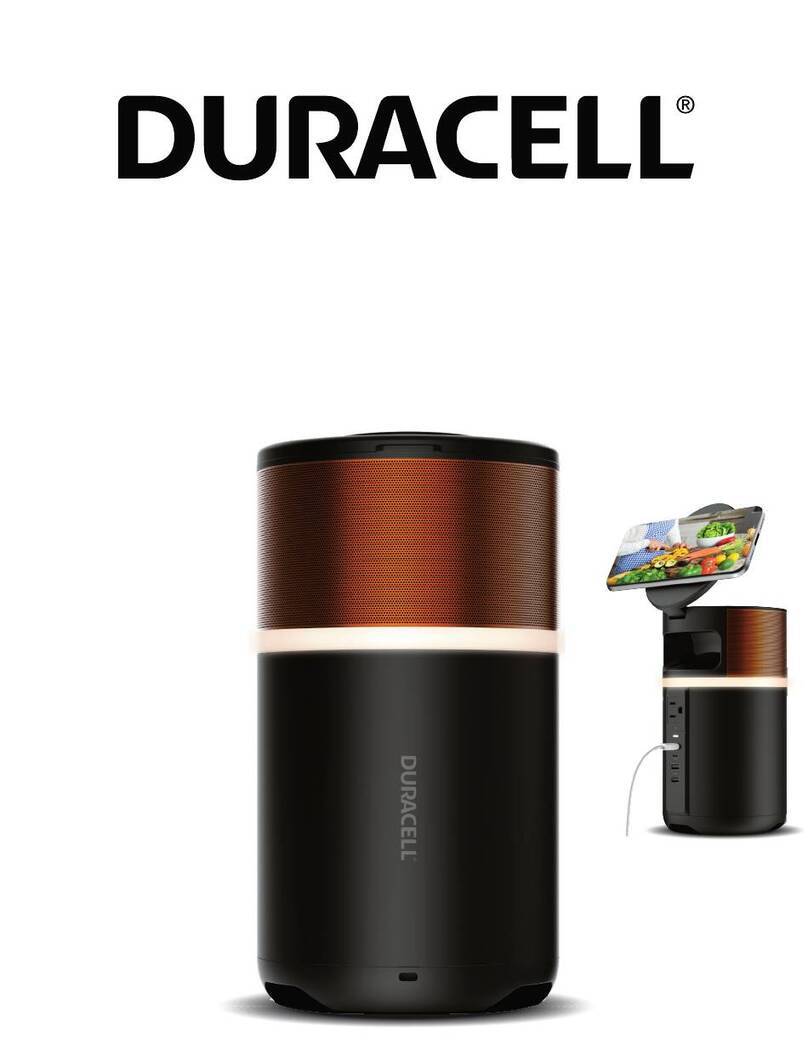Thunder Scientific 2500 series User manual

OPERATION AND MAINTENANCE MANUAL
BENCHTOP TWO-PRESSURE
HUMIDITY GENERATOR
SERIES 2500
®

SERIES 2500
BENCHTOP TWO-PRESSURE
HUMIDITY GENERATOR
OPERATION AND
MAINTENANCE MANUAL
Copyright © 1991-2017
THUNDER SCIENTIFIC CORPORATION
623 WYOMING BLVD. SE
ALBUQUERQUE, NEW MEXICO 87123-3198
www.thunderscientific.com
Printed 2017
Tel: 505.265.8701 FAX: 505.266.6203
Document Edition 18 October 2017
Firmware Version 2.14
THUNDER SCIENTIFIC® is the registered trademark of Thunder Scientific Corporation.
All the information provided in this document is correct and true at the time of publication.
Thunder Scientific Corporation reserves the right to change any technical data without notice.
MADE IN USA

Model 2500 Two-Pressure Two-Temperature Humidity Generator

i
TABLE OF CONTENTS
Section 1 - GENERAL INFORMATION
List of Illustrations
List of Reference Drawings
Warranty
1.1 INTRODUCTION ---------------------------------------------------------------- 1-1
1.2 PRINCIPLE OF OPERATION ------------------------------------------------- 1-1
1.2.1 General Description--------------------------------------------------------- 1-1
1.2.2 RH Formula For Ideal Gas------------------------------------------------- 1-2
1.2.3 RH Formula For Air -------------------------------------------------------- 1-4
1.2.4 Pressure Ratio --------------------------------------------------------------- 1-5
1.2.5 Effective Degree Of Saturation ------------------------------------------- 1-5
1.2.6 Enhancement Factor Ratio ------------------------------------------------- 1-6
1.3 SPECIFICATIONS --------------------------------------------------------------- 1-7
1.3.1 Facility Requirements ------------------------------------------------------ 1-7
1.3.2 Environmental --------------------------------------------------------------- 1-7
1.4 COMPUTER CONTROL SYSTEM ------------------------------------------ 1-8
1.4.1 General Description--------------------------------------------------------- 1-8
1.4.2 Central Processing Unit (STD-CPU)------------------------------------- 1-9
1.4.3 Liquid Crystal Display (LCD)--------------------------------------------- 1-9
1.4.4 Liquid Crystal Display Driver (STD-LCD) ----------------------------- 1-9
1.4.5 Keypad------------------------------------------------------------------------ 1-9
1.4.6 Memory Card (STD-MEM) ----------------------------------------------- 1-9
1.4.7 Analog to Digital Converter (STD-A/D) -------------------------------- 1-9
1.5 ELECTRICAL -------------------------------------------------------------------1-10
1.5.1 AC Power Distribution ----------------------------------------------------1-10
1.5.2 Power Supply 24 VAC ----------------------------------------------------1-10
1.5.3 Power Supply (STD-PS) --------------------------------------------------1-10
1.5.4 Analog Inputs (STD-A/D) ------------------------------------------------1-11
1.5.4.1 Temperature Measurement------------------------------------------1-11
1.5.4.2 Mass Flow Transducer (T1)-----------------------------------------1-11
1.5.4.3 50 PSIA Pressure Transducer (T2)---------------------------------1-11
1.5.4.4 150 PSIA Pressure Transducer (T3) -------------------------------1-12
1.5.5 Control Logic ---------------------------------------------------------------1-12
1.5.5.1 Air Supply Solenoid Valve (SOL1)--------------------------------1-12
1.5.5.2 Refrigerant Solenoid Valve (SOL2) -------------------------------1-12
1.5.5.3 Pressure Bleed Solenoid Valve (SOL3) ---------------------------1-12
1.5.5.4 Pressure Select Solenoid Valve (SOL5)---------------------------1-13
1.5.5.5 Heat Transfer Fluid Heater (H3) -----------------------------------1-13
1.5.5.6 Presaturator Heaters (H1 & H2)------------------------------------1-13
1.5.5.7 Expansion Valve Heaters (H4 & H5)------------------------------1-13
1.5.5.8 Fluid Circulation Pump (FP1) --------------------------------------1-13
1.5.5.9 Refrigeration Compressor (C1)-------------------------------------1-14
1.5.5.10 Flow Valve (V1) - Actuation ---------------------------------------------1-14
1.5.5.11 Expansion Valve (V2) - Actuation --------------------------------------1-14
1.5.5.12 Reservoir Liquid Level Transducer (LL1)------------------------------1-14
1.5.5.13 Presaturator Liquid Level Transducer (LL2) ---------------------------1-15
1.5.5.14 Console Fan (CF1) ---------------------------------------------------------1-15

ii
TABLE OF CONTENTS CONTINUED
1.6 PNEUMATIC SYSTEM ------------------------------------------------------- 1-16
1.6.1 General Description ------------------------------------------------------- 1-16
1.6.2 Presaturator ----------------------------------------------------------------- 1-17
1.6.3 Saturator--------------------------------------------------------------------- 1-17
1.6.4 Expansion Valve----------------------------------------------------------- 1-17
1.6.5 Reservoir -------------------------------------------------------------------- 1-17
1.7 HEAT TRANSFER FLUID SYSTEM--------------------------------------- 1-19
1.7.1 General Description ------------------------------------------------------- 1-19
1.7.2 Fluid Heating --------------------------------------------------------------- 1-20
1.7.3 Fluid Refrigeration -------------------------------------------------------- 1-20
Section 2 – INSTALLATION
2.1 GENERAL -------------------------------------------------------------------------2-1
2.2 FACILITIES REQUIRED -------------------------------------------------------2-1
2.2.1 Bench / Floor Space ---------------------------------------------------------2-1
2.2.2 Power --------------------------------------------------------------------------2-1
2.2.3 Air Supply (if used without pneumatic cart)-----------------------------2-2
2.2.4 Distilled Water Supply------------------------------------------------------2-2
2.3 PREPARATION ------------------------------------------------------------------2-2
2.3.1 Chamber Fluid Filling-------------------------------------------------------2-2
2.3.1.1 Chamber Fluid Filling Procedure------------------------------------2-2
2.3.2 Positioning and Connections-----------------------------------------------2-3
2.3.2.1 Pneumatic Cart ---------------------------------------------------------2-3
2.3.2.2 Bench Space -----------------------------------------------------------2-4
2.3.2.3 Power -------------------------------------------------------------------2-4
2.3.2.4 Air Supply---------------------------------------------------------------2-5
Section 3 – OPERATION
3.1 GENERAL -------------------------------------------------------------------------3-1
3.2 STANDARD OPERATING PROCEDURES --------------------------------3-1
3.2.1 Power-Up ---------------------------------------------------------------------3-1
3.2.2 Control/Display Screen -----------------------------------------------------3-1
3.2.2.1 Changing the Display Contrast --------------------------------------------3-3
3.2.3 Changing Setpoints----------------------------------------------------------3-3
3.2.4 Changing Units---------------------------------------------------------------3-5
3.2.5 Control Modes ---------------------------------------------------------------3-5
3.2.6 Run/Stop ----------------------------------------------------------------------3-6
3.2.7 Printer (optional)-------------------------------------------------------------3-7
3.2.8 Power-Off---------------------------------------------------------------------3-7
3.2.8.1 Maintenance Power-Off-----------------------------------------------3-8
3.2.9 Filling the Reservoir---------------------------------------------------------3-8
3.3 EDITING SYSTEM COEFFICIENTS AND PARAMETERS ------------3-9
3.3.1 Edit Mode---------------------------------------------------------------------3-9
3.3.2 Coefficients and Parameters---------------------------------------------- 3-11

iii
TABLE OF CONTENTS CONTINUED
3.3.2.1 Temperature Coefficients -------------------------------------------3-11
3.3.2.2 Reference Resistor Coefficients ------------------------------------3-12
3.3.2.3 Pressure Coefficients-------------------------------------------------3-12
3.3.2.4 Flow Coefficients-----------------------------------------------------3-13
3.3.2.5 Console Port Parameters --------------------------------------------3-14
3.3.2.6 Printer Port Parameters ----------------------------------------------3-15
3.3.2.7 Time and Date --------------------------------------------------------3-15
Section 4 - CALIBRATION AND MAINTENANCE
4.1 GENERAL ------------------------------------------------------------------------ 4-1
4.2 CALIBRATION ------------------------------------------------------------------ 4-1
4.2.1 A/D Board (STD-A/D) ----------------------------------------------------- 4-2
4.2.2 Temperature Calibration --------------------------------------------------- 4-2
4.2.2.1 Temperature Calibration Procedure--------------------------------- 4-3
4.2.3 Pressure Transducer Calibration ------------------------------------------ 4-7
4.2.3.1 Pressure Calibration Procedure-------------------------------------- 4-7
4.2.4 Flow Transducer Calibration ---------------------------------------------4-11
4.2.4.1 Flow Calibration Procedure-----------------------------------------4-11
4.2.5 Printing the Calibration Report ------------------------------------------4-14
4.3 ROUTINE MAINTENANCE--------------------------------------------------4-17
4.3.1 Console Intake: Monthly --------------------------------------------------4-17
4.3.2 Chamber Fluid Level: Yearly---------------------------------------------4-17
4.3.3 Pre-saturator Drain: Yearly -----------------------------------------------4-17
4.3.4 Mobile Pneumatic Cart: Daily--------------------------------------------4-17
4.4 ERROR CODES and TROUBLESHOOTING------------------------------4-18
Section 5 - PARTS LISTS
5.1 COMPLETE SYSTEM COMPONENTS------------------------------------- 5-1
5.2 PNEUMATIC CART ------------------------------------------------------------ 5-3
5.3 AIR BOX ELECTRICAL ------------------------------------------------------- 5-3
5.4 OPTION INDICATORS--------------------------------------------------------- 5-3

iv
LIST OF ILLUSTRATIONS
FIGURE TITLE PAGE
1-1 Two Pressure Elemental Schematic ----------------------------------1-2
1-2 STD Bus Diagram-------------------------------------------------------1-8
1-3 Pneumatic System----------------------------------------------------- 1-16
1-4 Heat Transfer Fluid System------------------------------------------ 1-19
1-5 Refrigeration System ------------------------------------------------- 1-20
2-1 Mechanical / Utility-----------------------------------------------------2-1
2-2 Chamber Fluid Fill Port Location-------------------------------------2-3
2-3 Generator / Cart Mechanical-------------------------------------------2-3
2-4 Pneumatic Cart w/Air Compressor Sound Enclosure--------------2-4
2-5 Pneumatic Cart w/o Air Compressor ---------------------------------2-5
LIST OF REFERENCE DRAWINGS
DRAWING # DRAWING TITLE
91D25901 -------------------------Layout, Utility / Mechanical
91D25902 -------------------------Probe Location
91D25903 -------------------------Circuit Card and Component Location
91D25904 -------------------------Electrical Sub Panel Layout
91D25905 -------------------------Terminal Layout
91S25906 --------------------------AC / DC Power
91S25907 --------------------------Solid State Relay Module Board
91S25908 --------------------------Compressor / Heater Schematic
91S25909 --------------------------Liquid Level / Speaker Schematic
91S25910 --------------------------Flow Valve (V1) Schematic
91S25911 --------------------------Expansion Valve (V2) Schematic
91S25912 --------------------------Temperature Probe / Transducer Schematic
91D25913 -------------------------STD Bus Diagram
91S25914 --------------------------Display Block Diagram
91D25915 -------------------------RS-232C Console / Printer
91S25916 --------------------------Pneumatic System
91S25917 --------------------------Heat Transfer Fluid System
91S25918 --------------------------Refrigeration System
98D25919 -------------------------Layout, Compressor Enclosure w/Cart
91S25921 --------------------------Schematic, Cart - Pneumatic System
97D25924 -------------------------Instructions, Chamber Fluid Filling
97D25926 -------------------------Cart Mechanical Dimensions R Model
08S25942 --------------------------2500 Fuse Upgrade Schematic
ACS2031 --------------------------Schematic, ACS Twin Electrical

WARRANTY
Thunder Scientific Corporation (TSC) warrants, to the Buyer, the
Product manufactured by TSC to be free of defects in material and
workmanship under normal use and service and to be free from
inadequate mechanical design when operated within the specified
design limitations for a period of twelve months from date of
acceptance. TSC's obligation under this warranty shall be limited
to the following: the Product is returned to TSC with transportation
charges prepaid and that TSC's examination reveals the Product to
be defective. TSC, at its option, shall either refund to the Buyer
the purchase price of the product or repair or replace at TSC's
plant, any part or parts of the Product which is or are defective.
This warranty shall not apply to any Product which has been
maintained, handled, stored, repaired or altered in any manner, or
by anyone other than an authorized TSC representative, so as to
affect adversely such Product or which has been subject to
improper installation, misuse, negligence, accident or corrosion.
THIS WARRANTY IS EXCLUSIVE AND IN LIEU OF ANY
WARRANTY OF MERCHANTABILITY, FITNESS FOR A
PARTICULAR PURPOSE OR ANY OTHER WARRANTY,
WHETHER EXPRESS OR IMPLIED, AND ALL OTHER
LIABILITIES AND OBLIGATIONS ON THE PART OF TSC;
TSC SHALL NOT BE LIABLE FOR ANY OTHER CLAIMS OR
DAMAGES, EITHER DIRECT OR CONSEQUENTIAL,
ARISING DIRECTLY OR INDIRECTLY OUT OF SUPPLYING
THE PRODUCT. All warranties, express or implied, with respect
to any device or component not manufactured by TSC but
incorporated into its Product are the responsibility of the original
manufacturer and shall not affect or apply to TSC.

Thunder Scientific®
Corporation
Thunder Scientific Corporation Web: www.thunderscientific.com
623 Wyoming Blvd. SE E-mail: support@thunderscientific.com
Albuquerque, NM 87123 Phone: 1-800-872-7728
2500 Item Check List
1. Certificate of Calibration (In Manual)
2. Operation and Maintenance Manual
3. HumiCalc® with Uncertainty Software
4. 2500 ControLog® Software
5. Chamber Insulation Foam
6. Chamber Port Foam Plug
7. Power Cable
8. Torx Driver with Screws
9. Reservoir Fluid Funnel
10. Chamber Fill Funnel
11. Elbow, ¼ Flare x ¼ MPT Brass
12. Communication Cables (Printer & Computer)
13. Chamber Fluid
1. Optional Equipment – Air compressor power cable
2. ACS2520 – Air Compressor System Manual
3. Air Hose – On Air Box
PROPYLENE GLYCOL 3 bottles for the R, 4 bottles for the ST

PN 2566073, 1/2006
Tämä tuote noudattaa WEEE-direktiivin (2002/96/EY)
merkintävaatimuksia. Kiinnitetty etiketti osoittaa, että tätä
sähkö-/elektroniikkalaitetta ei saa hävittää kotitalousjätteissä.
Tuoteluokka: Viitaten WEEE-direktiivin liitteessä I mainittuihin
laitteisiin, tämä tuote on luokiteltu luokan 9 “Tarkkailu- ja
ohjauslaitteet” -tuotteeksi.
Ei saa heittää kotitalousjätteiden mukana!
Palauta tarpeettomat tuotteet ottamalla yhteyttä valmistajan
websivustoon, joka mainitaan tuotteessa tai paikalliseen
myyntitoimistoon tai jakelijaan.
Suomi
Dette produkt er i overensstemmelse med kravene om afmærkning
i WEEE-direktivet (2002/96/EC). Det påhæftede mærkat angiver,
at du ikke må bortskaffe dette elektriske/elektroniske produkt via
husholdningsaffald.
Produktkategori: Med reference til kravene i WEEE-direktivets
bilag I klassificeres dette produkt som et produkt til “overvågning
og kontrolinstrumentering” i kategori 9.
MÂ ikke bortskaffes via husholdningsaffald!
Hvis du vil returnere uønskede produkter, skal du besøge
producentens websted, som vises på produktet, eller den lokale
forhandler eller distributør.
Dansk
This product complies with the WEEE Directive (2002/96/EC) marking
requirements. The affixed label indicates that you must not discard
this electrical/electronic product in domestic household waste.
Product Category: With reference to the equipment types in the
WEEE Directive Annex I, this product is classed as category 9
“Monitoring and Control Instrumentation” product.
Do not dispose in domestic household waste!
To return unwanted products, contact the manufacturer’s web site
shown on the product or your local sales office or distributor.
English
Ce produit est conforme aux normes de marquage de la directive
DEEE (2002/96/CE). La présence de cette étiquette indique que
cet appareil électrique/électronique ne doit pas être mis au rebut
avec les déchets ménagers.
Catégorie de EEE : Cet appareil est classé comme catégorie 9 parmi
les « instruments de surveillance et de contrôle » en référence aux
types d’équipements mentionnés dans l’Annexe I de la directive DEEE.
Ne pas éliminer avec les autres déchets ménagers !
Pour renvoyer les produits indésirables, contacter le site Web du
fabricant mentionné sur le produit, ou son distributeur ou bureau de
ventes local.
Français
Este producto cumple la Directiva WEEE (2002/96/EC) sobre
requisitos de las marcas. La etiqueta que lleva pegada indica
que no debe desechar este producto eléctrico o electrónico con
los residuos domésticos.
Categoría del producto: con referencia a los tipos de equipo
del anexo I de la Directiva WEEE, este producto está clasificado
como categoría 9 de “Instrumentación de supervisión y control”.
¡No lo deseche con los residuos domésticos!
Para devolver productos que no desee, póngase en contacto con
el sitio Web del fabricante mostrado en el producto, o con la oficina
de ventas o distribuidor local.
Español

Dieses Produkt stimmt mit den Kennzeichnungsanforderungen
der WEEE-Richtlinie (2002/96/EC) überein. Das angebrachte
Etikett weist darauf hin, dass dieses elektrische/elektronische
Produkt nicht in Hausmüll entsorgt werden darf.
Produktkategorie: In Bezug auf die Gerätetypen in Anhang
I der WEEE-Richtlinie ist dieses Produkt als Kategorie 9
“Überwachungs- und Kontrollinstrument” klassifiziert.
Nicht in Hausmüll entsorgen!
Zur Rückgabe von unerwünschten Produkten die auf dem
Produkt angegebene Website des Herstellers oder die zuständige
Verkaufsstelle bzw. den zuständigen Fachhändler konsultieren.
Deutsch
Questo prodotto risponde ai requisiti sull’etichettatura stabiliti
nella Direttiva RAEE (2002/96/CE). Il simbolo apposto indica che
non si deve gettare questo prodotto elettrico o elettronico in un
contenitore per rifiuti domestici.
Categoria del prodotto: con riferimento ai tipi di apparecchiature
elencate nell’Allegato 1 della Direttiva RAEE, questo prodotto
rientra nella categoria 9 “Strumenti di monitoraggio e di controllo”.
Non gettare in un contenitore per rifiuti domestici.
Per restituire prodotti non desiderati, visitare il sito Web del
produttore riportato sul prodotto o rivolgersi al distributore o
all’ufficio vendite locale.
Italiano
Este produto está em conformidade com as exigências de rotulagem
da Directiva WEEE (2002/96/EC). O rótulo afixado indica que o
utilizador não deve deitar este produto eléctrico/electrónico fora
juntamente com o lixo doméstico.
Categoria do produto: No que se refere aos tipos de equipamento lis-
tados no Anexo I da Directiva WEEE, este produto está classificado como
produto da categoria 9, “Instrumentação de monitorização e controlo”.
Não deite fora juntamente com o lixo doméstico!
Para devolver produtos indesejados, contacte o fabricante através do
Website constante do produto ou contacte o seu representante de
vendas ou distribuidor local.
Português
Dit product voldoet aan de merktekenvereisten van de AEEA-
richtlijn (2002/96/EG). Het aangebrachte merkteken duidt erop dat
dit elektrische/elektronische product niet met het huishoudelijk
afval mag worden afgevoerd.
Productcategorie: Met betrekking tot de apparatuurcategorieën
van bijlage I van de AEEA-richtlijn, valt dit product onder categorie
9 ‘meet- en controle-instrumenten’.
Niet afvoeren met huishoudelijk afval!
Om ongewenste producten te retourneren, neemt u contact op
met de website van de fabrikant die op het product staat vermeld,
of met uw plaatselijke verkoopkantoor of distributeur.
Nederlands
Denna produkt uppfyller märkningskraven enligt WEEE Directive
(2002/96/EC). Märkningsetiketten anger att du inte får kassera denna
elektriska/elektroniska produkt tillsammans med vanliga hushållssopor.
Produktkategori: Med hänvisning till utrustningstyperna i
WEEE Directive Annex I, är denna produkt klassad som kategori 9
“Monitoring and Control Instrumentation” (Instrument för
övervakning och styrning).
Får ej kasseras tillsammans med vanliga hushållssopor!
Returnera ej önskvärda produkter genom att gå till tillverkarens
webbplats, vilken anges på produkten, eller till det lokala
försäljningskontoret eller distributören.
Svenska
Dette produktet oppfyller bestemmelsene ifølge WEEE-direktiv
(2002/96/EC) med krav til merking. Påsatt merke viser at det ikke
er tillatt å kassere dette elektriske/elektroniske produktet sammen
med husholdningsavfall.
Produktkategori: På grunnlag av utstyrstypene i WEEE-
direktivet, vedlegg I, er dette produktet klassifisert i kategori 9,
“Instrumentering for overvåking og kontroll”.
Må ikke kastes sammen med husholdningsavfall!
Ved behov for returforsendelse av uønskede produkter må du gå
til produsentens nettside som er angitt på produktet, eller du må
kontakte det lokale salgskontoret eller den lokale forhandleren.
Norsk

1-1
Section 1
GENERAL INFORMATION
1.1 INTRODUCTION
The Model 2500 Benchtop Humidity Generator is a self contained facility capable of
producing known humidity values using the fundamental principle of the "two pressure"
generator developed by NIST. This system is capable of continuously supplying accurately
known humidity values for instrument calibration, evaluation and verification.
The 2500 operates using an on board computer and control system to perform calculation and
control functions. The Computer Control System utilizes a multifunction STD Bus CPU in
conjunction with other STD Bus peripheral cards for control and is incorporated into the
benchtop humidity generator. Peripheral equipment, such as a printer or computer, may be
connected using the bi-directional RS-232C interfaces.
Humidity and temperature setpoint values are input by the operator from the front panel
keypad. Visual indications of system status are displayed in real time on the Liquid Crystal
Display. The automatic features of this system allow the 2500 to generate humidity and
temperature setpoints completely unattended. This automated approach frees the operating
technician from the task of system monitoring and adjustments, allowing him time to perform
other vital tasks.
1.2 PRINCIPLE OF OPERATION
1.2.1 General Description
Operation of the 2500 humidity generator is based on the two-pressure method of producing
known atmospheres of relative humidity and assumes that the water vapor pressure remains a
fraction of the total pressure, known as Dalton's Law of Partial Pressure. Dalton's Law states
that the pressure exerted by a mixture of gases in a given volume at some temperature is
equal to the sum of the pressures which would be exerted by each individual gas if it alone
occupied the volume at the same temperature.
The two pressure method (shown in elemental schematic form in figure 1-1) involves
saturating air, or some other gas such as nitrogen, with water vapor at a given pressure and
temperature. The saturated gas then flows through an expansion valve where it is
isothermally reduced to chamber pressure. If the temperature of the gas is held constant
during pressure reduction, the humidity, at chamber pressure, may then be approximated as
the ratio of two absolute pressures.
%RH ≈Pchamber
Psaturator .100
Humidity produced in the test chamber of this system does not depend on devices such as
psychrometers, dewpoint hygrometers, or solid state sensors for the measurement of water
vapor content. Humidity that is produced is solely dependent on the measurement of absolute
pressures and on the maintenance of isothermal conditions. Precision humidity generation is
determined by the accuracy of these pressure measurements and uniformity of temperature
throughout the generating system.

1-2
Figure 1-1
1.2.2 RH Formula For Ideal Gas
The relative humidity formula, equation 1 given in section 1.2.1, is a correct relationship
between pressures and relative humidity when dealing with perfectly isothermal conditions
and perfectly ideal gases. However, under dynamic conditions where some slight
temperature differences do exist and since gases do not behave ideally, any expectation of
this equation to accurately represent the actual relative humidity would be overly optimistic.
In its strictest form, relative humidity is defined in terms of mole fractions and is given as
%RH =
w
v
X
X
P,T
·100
where Xv= the mole fraction of water vapor in a sample of
moist air at a specific pressure, P, and temperature, T,
and
Xw= the mole fraction of water vapor which would exist in
a sample of air if it were saturated with water vapor at
the same pressure, P, and temperature, T, as the
unsaturated sample Xv.
The mole fraction of water vapor in a sample of gas is given by
X= Pv
P
where Pv= the partial pressure of the gas which is exerted by the
water vapor constituent alone, and
P= the absolute (or total) pressure of the gas, which is
also equal to the sum of the partial pressures exerted
by the water vapor and dry air constituents.
When a gas is fully saturated with water vapor, the partial pressure, Pv, exerted by the water
vapor constituent is a known quantity, ew(T), and is termed "the saturation vapor pressure of
air with respect to water". Since, at saturation, Pv = ew(T), the mole fraction equation of a
saturated gas may be written as
X= ew(T)
P
TEST CHAMBER
SATURATOR
AIR SUPPLY
EXHAUST
EXPANSION
VALVE
P
s
P
c

1-3
where ew(T) = the saturation vapor pressure of air with respect to
water (at temperature T), and is the partial pressure
exerted by the water vapor constituent,
and
P= the absolute (or total) pressure of the gas.
The mole fraction of water vapor which would exist in a saturated gas sample at the chamber
pressure, Pc, and chamber temperature, Tc, would be the quantity, Xw,which is needed to
calculate the relative humidity relationship previously discussed. Here, the mole fraction,
under saturated conditions, may be expressed by
Xw= ew(Tc)
Pc
where ew(Tc)= the saturation vapor pressure of air with respect to
water at the chamber temperature, Tc, and
Pc= the measured absolute pressure in the chamber
expressed in the same units as ew(Tc).
The other quantity, Xv, required for the calculation of relative humidity, is that mole fraction
of water vapor which actually exists in the air sample within the chamber at pressure Pc, and
temperature Tc. If the chamber pressure, Pc, were used in the calculation of the mole fraction
Xv, the expression would be
Xv= Pv
Pc
which would require direct measurement of the water vapor content. However, this
requirement is eliminated by using the relationship
ew(Ts)
Ps= Pv
Pc
where ew(Ts)= the saturation vapor pressure of air with respect to
water at the temperature of saturation, Ts,(the
saturation temperature), and
Ps= the measured absolute (or total) pressure at which the
sample is saturated (the saturation pressure).
The basis for this relationship lies in the fact that the number of molecules of the constituents
within a sample of gas remain constant regardless of the pressure or temperature, provided
that the temperature or pressure applied does not cause a change in phase (i.e., gas to liquid).
Since the saturation vapor pressure, ew(T), is a well known function of the temperature alone,
the total pressure at saturation, Ps, may be adjusted to any reasonable value to achieve the
desired mole fraction of water vapor. Relying on this relationship, the mole fraction of water
vapor entering the chamber (and at chamber temperature) may be written as that mole
fraction of water vapor existing in the saturator at the saturation pressure and temperature.
Thus,
Xv= ew(Ts)
Ps

1-4
The relative humidity may now be expressed in terms of these other quantities by returning to
the original definition and substituting in the appropriate expressions.
%RH =
w
v
X
X
P,T
·100
=
⋅
c
cw
s
sw
P
Te
P
Te
)(
)(
100
After rearrangement of terms, the relative humidity formula for ideal gases may then be
expressed as
%RH =
( )
( )
cw
sw
Te
Te
⋅⋅
s
c
P
P
100 eq.(2)
where ew(Ts)= the saturation vapor pressure at the saturation
temperature, Ts,
ew(Tc)= the saturation vapor pressure at the chamber
temperature, Tc,
Pc= the absolute pressure in the chamber, and
Ps= the absolute pressure in the saturator.
1.2.3 RH Formula For Air
Air, a mixture of gases with varying compressibilities, exhibits non-ideal properties, which
affect the saturation vapor pressure, ew(T). The saturation vapor pressures, ew(Ts)and ew(Tc),
in the relative humidity formula of 1.2.2, must be replaced by their "effective" saturation
vapor pressures which are related to the ideal SVP by
ew'(P,T) = ƒw(P,T) ew(T)
where ew'(P,T) = the "effective saturation vapor pressure of air with
respect to water" at absolute pressure, P, and
temperature, T, and
ƒw(P,T) = the "enhancement factor for moist air" at pressure, P,
and temperature, T.
The relative humidity formula for air, based on the effective saturation vapor pressures, is
then written as
%RH =
),('
),('
ccw
ssw
TPe
TPe
·
s
c
P
P
· 100
and, after making the appropriate substitutions, is expressed by
%RH = ƒw(Ps,Ts)
ƒw(Pc,Tc)·ew(Ts)
ew(Tc)·Pc
Ps·100 eq.(3)

1-5
It can now be seen by inspection of the relative humidity formula, expressed in its final form
in equation 3, that known relative humidities may be accurately generated, using air, through
measurement and control of pressure and temperature alone.
1.2.4 Pressure Ratio
The term Pc
Ps, in equation 2 of section 1.2.2 and equation 3 of section 1.2.3, is simply the
ratio of the chamber pressure to the saturator pressure. This is the "idealistic" portion of the
relative humidity formula which ignores minor temperature differences between the saturator
and chamber. It also assumes that moist air behaves as an ideal gas. This ratio closely
approximates the actual relative humidity, and is often used alone to express the humidity
when ease of calculation outweighs the need for the additional accuracy provided by the
temperature and pressure corrections. The pressures Pcand Psare measured directly through
the use of high accuracy absolute pressure transducers.
1.2.5 Effective Degree Of Saturation
The term ew(Ts)
ew(Tc), in equation 2 of section 1.2.2 and equation 3 of section 1.2.3, referred to as
the "effective" degree of saturation, is a temperature correction ratio which accounts for
super-saturation and under-saturation of the gas in the saturator, at temperature Ts, with
respect to the chamber temperature, Tc, due to any small temperature differences which may
exist between them. When the chamber and saturation temperatures are identically matched,
the effective degree of saturation is exactly equal to 1.0 and no temperature correction takes
place. To obtain the effective degree of saturation when temperature differences do occur,
the saturation vapor pressures at the saturation and chamber temperatures, Tsand Tc, must be
calculated. There have been several formulas derived which express the saturation vapor
pressure as a function of temperature. However, the most accurate formulation currently
available for the limited range of 0 to 100 °C is that of Wexler, given as
ew(T) = exp
( ) ( )
+⋅+
+
−
=
∑15.273ln15.273
2
6
0
TDTC
i
i
i
where C0= -2.9912729 x 103
C1= -6.0170128 x 103
C2= 1.887643854 x 101
C3= -2.8354721 x 10-2
C4= 1.7838301 x 10-5
C5= -8.4150417 x 10-10
C6= 4.4412543 x 10-13
D= 2.858487
T= temperature of the gas in °C.
Saturation vapor pressures, ew(T), calculated with this formula are expressed in Pascals.
When taking the ratio of ew(Ts)to ew(Tc), the units will cancel, leaving the effective degree of
saturation as a dimensionless quantity.

1-6
1.2.6 Enhancement Factor Ratio
The term ƒw(Ps,Ts)
ƒw(Pc,Tc), in equation 3 of section 1.2.3, referred to as the "enhancement factor
ratio", corrects for the non-ideal behavior of air when it is used as the carrier gas. Note that
the individual enhancement factors, ƒw, are functions of two independent variables; pressure,
P, and temperature, T. Since temperature differences within the system are relatively quite
small, and pressure differences relatively large, it is typically the pressure terms, Pcand Ps,
which dominate the formulas and bring about the greatest change in the enhancement factor
ratio. As applied to the two pressure humidity generator, this enhancement factor ratio may
be loosely viewed then as a pressure correction. At a relative humidity of 100%, the
pressures Pcand Pswould be equal, causing the enhancement factor ratio to equal 1.0
(ignoring temperature differences), thereby not affecting the relative humidity calculation.
Conversely, at low relative humidities (i.e., 5%), where the pressures Pcand Psdiffer greatly
(i.e., Ps≈20 • Pc), the enhancement factor ratio may exceed 1.06, affecting relative humidity
calculations by 0.3% or more. A formula for calculation of the enhancement factor ƒw(P,T)
at any given pressure and temperature is given by Greenspan as
ƒw(P,T) = exp
( ) ( )
−+
−11 Te
P
P
Te
w
w
βα
where P= the absolute pressure in Pascals, and
ew(T) = the saturation vapor pressure (in Pascals) at
temperature, T.
The two remaining variables, αand β, as derived by Greenspan are given as
α= ∑
i=0
3
AiTi
and β= exp∑
i=0
3
BiTi
where A0= 3.53624 x 10-4
A1= 2.93228 x 10-5
A2= 2.61474 x 10-7
A3= 8.57538 x 10-9
B0= -1.07588 x 101
B1= 6.32529 x 10-2
B2= -2.53591 x 10-4
B3= 6.33784 x 10-7, and
T= temperature of the gas in °C.
This formula for the enhancement factor is valid for pressures up to approximately 300 PSIA
and over the temperature range of 0 to 100 °C. Therefore it is also valid over the operating
range of the humidity generator. Note that to obtain the enhancement factor ratio, the
formula must be calculated once at the saturation pressure and temperature, Psand Ts, and
then again at the chamber pressure and temperature, Pcand Tc.

1-7
1.3 SPECIFICATIONS
Relative Humidity Range: ---------------------------------------------------- 10 to 95 %RH
Relative Humidity Uncertainty: @ Pc Tc * ------------------------------------- 0.5 %RH
Chamber Temperature Range: ----------------------------------------------- 0 °C to 70 °C
Chamber Temperature Range: (Optional) -------------------------------- -10 °C to 70 °C
Chamber Temperature Uniformity: **----------------------------------------------- 0.1 °C
Chamber Temperature Uncertainty: *---------------------------------------------- 0.06 °C
Chamber Pressure Range: ---------------------------------------------------------- Ambient
Chamber Pressure Uncertainty: *------------------------------------------------- 0.15% FS
Display Resolution: ------------------------------------------------------------------------ 0.01
Gas Flow Rate Range: *** --------------------------------------------------- 5 to 20 L/min
Gas Flow Rate Resolution: ----------------------------------------------------- 0.02 L/min
Gas Flow Rate Uncertainty: * -------------------------------------------------------- 2% FS
Gas Type: --------------------------------------------------------------------- Air or Nitrogen
Gas Pressure Rating: (MAWP) ----------------------------------------------------175 PSIG
Heating: ------------------------------------------------- Stainless Steel Immersion Heater
Heating/Cooling Rate: -------------------------------------- 2.5 Minutes Per °C Average
Cooling: --------------------------------------------- 1/3 hp R-134A Refrigeration System
Chamber Window: ------------------------------------------ 6" x 6" (152 mm x 152 mm)
Access Port: ----------------------------------------------- 1.9" (48 mm) port in right side
Physical Dimensions:
2500 --------------------- 20.25" (514 mm) H x 33" (838 mm) W x 20" (508 mm) D
2500ST ------------------- 23.25" (591 mm) H x 36" (914 mm) W x 23" (584 mm) D
Physical Dimensions with cart:
2500 ----------------------------53.5" (1.36 m) H x 40" (1.02 m) W x 23" (584 mm) D
2500ST -------------------------56.5" (1.44 m) H x 43" (1.09 m) W x 26" (660 mm) D
Chamber Dimensions:
2500 -------------------------- 12" (305 mm) H x 12" (305 mm) W x 10" (254 mm) D
2500ST ----------------------- 15" (381 mm) H x 15" (381 mm) W x 12" (305 mm) D
* Represents an expanded uncertainty using a coverage factor, k=2, at an approximate
level of confidence of 95%. Uncertainty for relative humidity is not specified
below 0 °C.
** When operating at a test temperature that is within ±10 °C of the ambient room
temperature.
*** Optional 10 to 40 L/min flow rate available.
1.3.1 Facility Requirements
Standard Electrical Power: -------- 100VAC @ 50Hz or 120VAC @ 60Hz, 15 amps
HV Electrical Power (Optional): --- 220VAC @ 50Hz or 240VAC @ 60Hz, 8 amps
Air Supply: ------ Clean, oil free instrument air @ 175 PSIG and 0.7 cfm (20 L/min)
1.3.2 Environmental
Operating Temperature: ----------------------------------------------------- 15 °C to 30 °C
Storage Temperature: --------------------------------------------------------- 0 °C to 50 °C
Relative Humidity: ------------------------------------------ 5% to 95 % non-condensing

1-8
1.4 COMPUTER CONTROL SYSTEM
1.4.1 General Description
Reference Drawings 91D25903 & 91D25913
The Computer Control System (figure 1-2), consisting of several STD bus plug-in circuit
board modules, is embedded in the humidity generator. The computer controls all aspects of
the humidity generation process (i.e., controlling temperatures, pressures, etc.) as well as
performing all human interface functions of keypad input and information display. The
computer also controls printer operation and interfaces with an external computer (optional)
for bi-directional RS-232C communications.
The Computer Control System is considered a "single point automation" unit, controlling the
functions of the humidity generator to bring it to any one operator input setpoint. The
computer will always control the system at the most current setpoint that has been input,
either via keypad input, or from external computer input thru the RS-232C port. The
Computer Control System knows nothing of past or future setpoints, requiring the use of an
external computer if automated temperature / humidity profiling is desired.
The Computer Control System consists of the following key components:
1) STD bus computer system, consisting of:
a) CPU card with 64180 processor (STD-CPU)
b) 8 channel, 15 bit A/D converter board (STD-A/D)
c) Memory board (STD-MEM)
d) Liquid crystal display driver board (STD-LCD)
e) Power supply converter board (STD-PS)
2) 256 x 128, backlit, dot matrix Liquid Crystal Display (LCD) module.
3) 16 key front panel keypad.
STD BUS
STD-PS
STD-LCD
STD-CPU
STD-A/D
STD-MEM
LCD-INV
LCD
SSRB
TIB
ATB
KB
CONSOLE
PORT
PRINTER
PORT
POWER SUPPLY BOARD DISPLAY DRIVER BOARD
ANALOG BOARD
MEMORY BOARD
ANALOG TERMINAL
BOARD
KEYBOARD
SOLID STATE
RELAY BOARD
TERMINAL INTERFACE
BOARD
INVERTER BOARD
LIQUID CRYSTAL
DISPLAY
ATB
KB
CONSOLE
PORT
PRINTER
PORT
ANALOG TERMINAL
BOARD
KEYBOARD
Figure 1-2

1-9
1.4.2 Central Processing Unit (STD-CPU)
The Central Processing Unit consists of a 64180 micro-processor, along with all supporting
hardware required to interface with the other devices. During the humidity generation
process, the main processing unit executes programming designed to control the parameters
needed to generate relative humidity, such as pulsing heaters and operating valves. Virtually
all functions of the system are controlled by this Central Processing Unit which is responsible
for system timing, user interfacing, information display, and parameter control.
1.4.3 Liquid Crystal Display (LCD)
The display incorporated into the 2500 humidity generator is a backlit, 256 x 128, dot matrix
Liquid Crystal Display (LCD). It is used for the purpose of displaying system information
such as setpoints, measurements, and any other information pertinent to the operation of the
2500 humidity generator.
1.4.4 Liquid Crystal Display Driver (STD-LCD)
The Liquid Crystal Display Driver (STD-LCD) receives display commands and data from the
Central Processing Unit then converts these into the signals required to drive the Liquid
Crystal Display module. It also incorporates a voltage inversion circuit, which converts +5
VDC input to a -21 VDC output required by the LCD module.
Contrast adjustment is controlled via a 0 to -5 VDC analog output from the STD-CPU. The
variable voltage is fed by a single wire from the STD-CPU to the STD-LCD driver board.
This voltage level, and the resulting contrast, is adjusted by the user from the front panel
keypad. (See section 3.2.2.1)
1.4.5 Keypad
The 4 x 4 Keypad provides operator input to the 2500 humidity generator. The keypad is
used to select modes of operation from the menus, enter humidity and temperature points for
humidity generation, and perform any other interface functions where user input is required.
During operation, most of the screens will show four rectangular shaped blocks at the right
side of the display. These blocks correspond with four blank keys on the left side of the
keypad, which will be used to perform various functions within the program.
1.4.6 Memory Card (STD-MEM)
The Memory Card contains both EPROM and battery backed memory. This memory
contains all program and data required for operation of the generator.
1.4.7 Analog to Digital Converter (STD-A/D)
The Analog to Digital Converter board is a 15 bit analog to digital converter, with integral
signal conditioning, used to monitor thermistor resistance, pressure transducer voltage, and
flowmeter voltage. It has a useable voltage range of 0 to +5 VDC.
Table of contents
Other Thunder Scientific Portable Generator manuals
Popular Portable Generator manuals by other brands

GENPOWER
GENPOWER GXS14000D Series user manual

Endress
Endress ESE Translation of the original operating manual
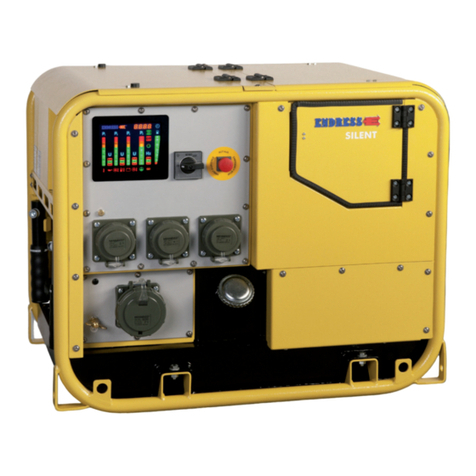
Endress
Endress ESE 607 DBG ES DIN operating manual

Onan
Onan Emerald Plus BGE Series Operator's manual
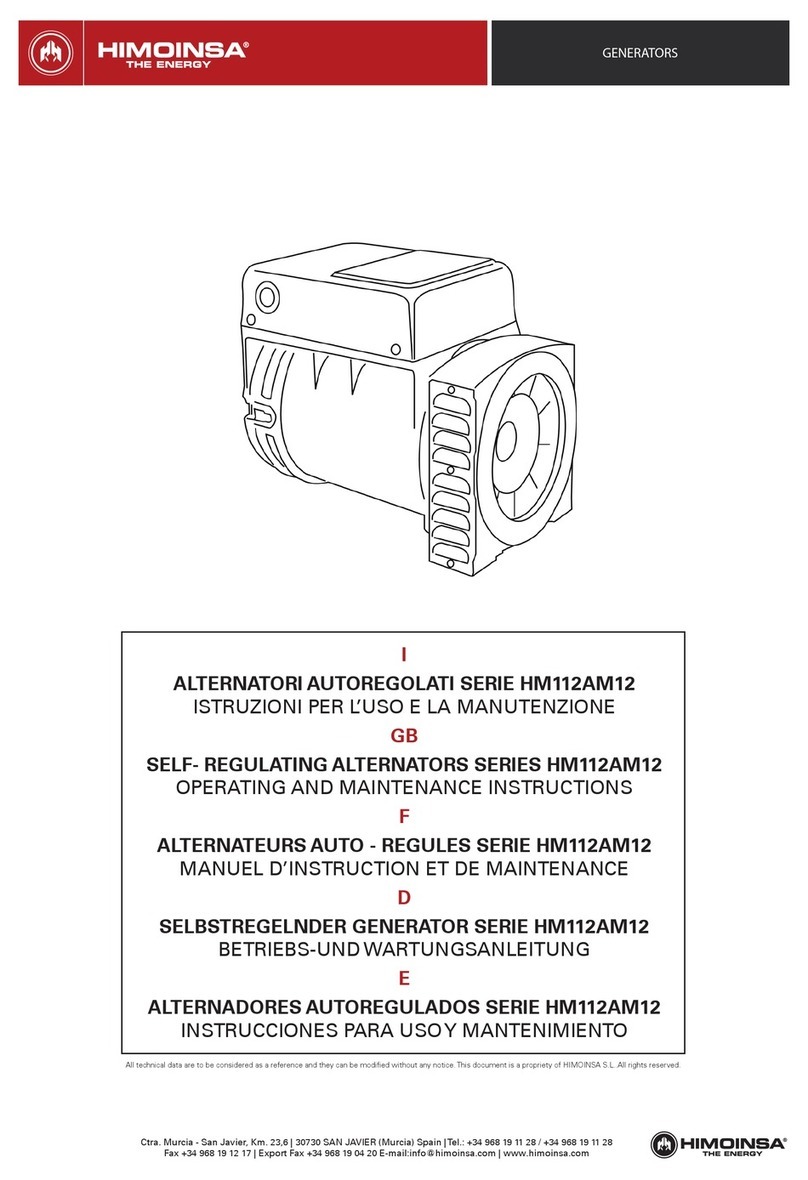
Himoinsa
Himoinsa HM112AM12 Operating and maintenance instructions
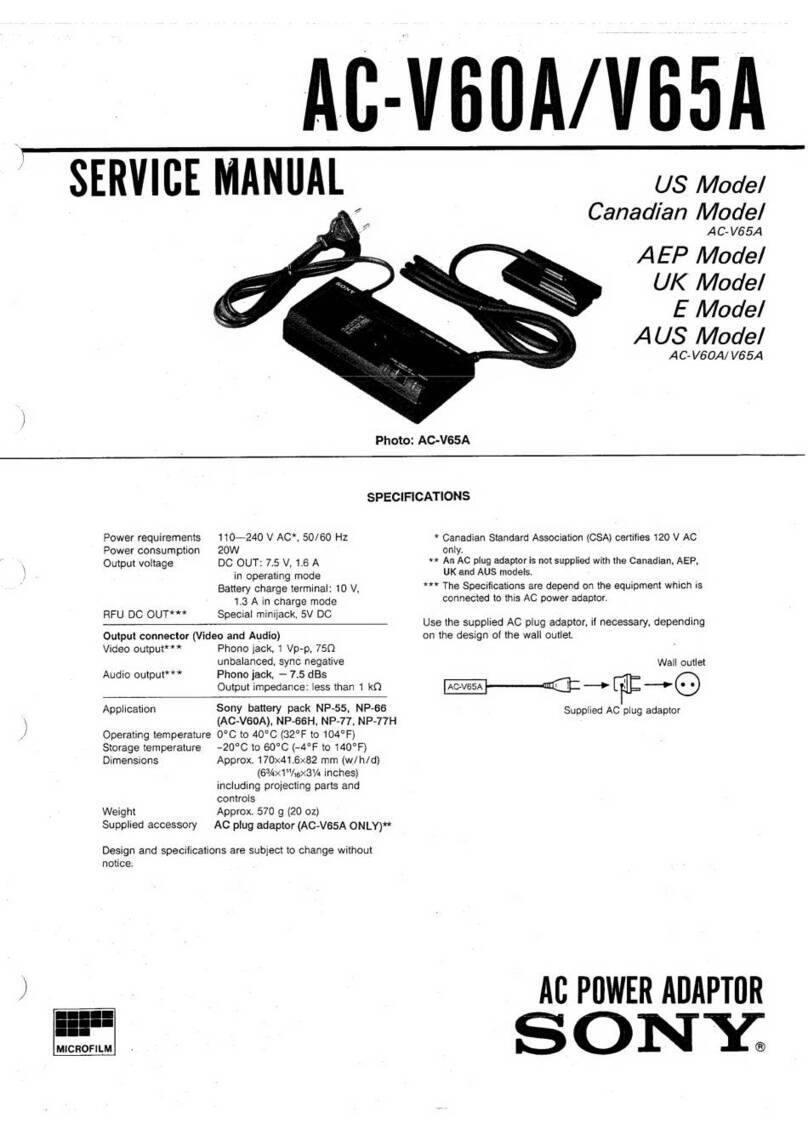
Sony
Sony AC-V60A Service manual
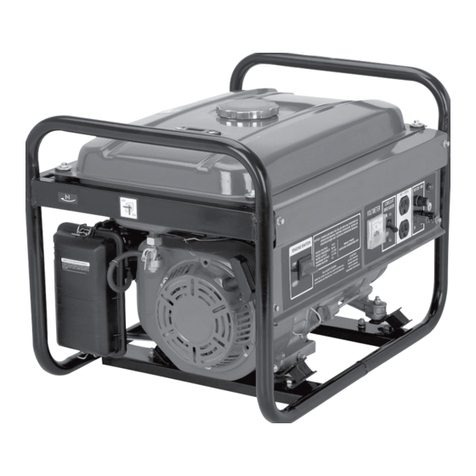
Chicago Electric
Chicago Electric 92455 operating instructions
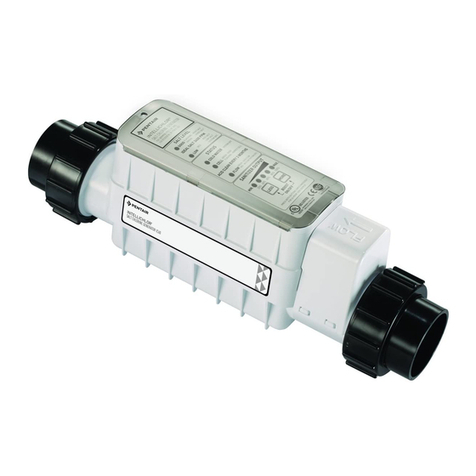
Pentair
Pentair INTELLICHLOR IC15 Installation and user guide

Champion
Champion 200951 quick start
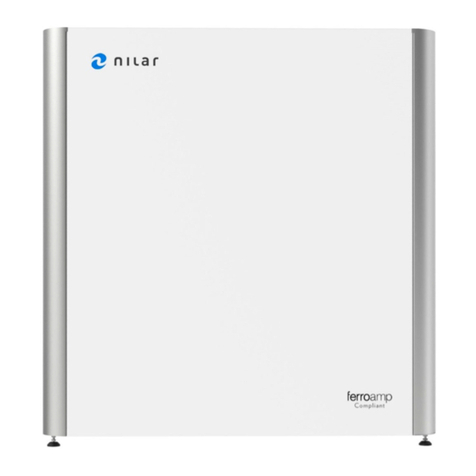
Nilar
Nilar Ferroamp Home Box instruction manual

Energizer
Energizer HardCase Professional Everest 500 user guide
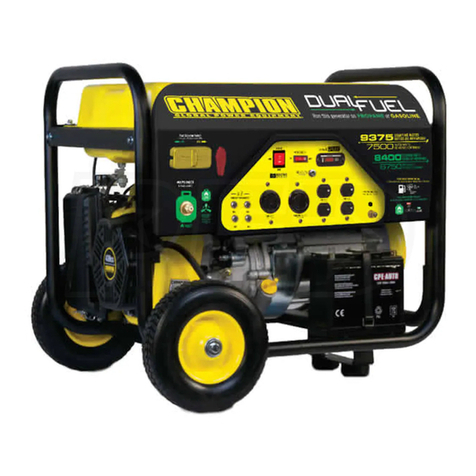
Champion Power Equipment
Champion Power Equipment 71531 Owner's manual & operating instructions
